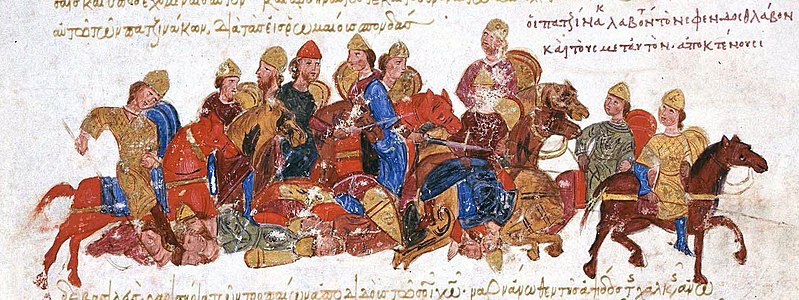Shown first are some of the plastic spearmen. Three of the figures below have shield transfers from Little Big Man and it's probably hard not to guess which. While I have no complaints about the transfers, it would cost over half the box price to buy enough transfers for 32 spearmen, so hopefully the hand painted shields do not seem overly wanting next to the transfers.
Below, a very easy conversion of an Arab turbaned head fixed on a GB Dark Age Warrior body. This would be good to mix into Andalusian or steppe armies.
Archers, which are probably my favorite part of the box, and far more adaptable than one would expect.
Using the veiled head I created a unit of Black Guard, elite troops used by the Almoravids in their push into Spain in the late eleventh century. In hindsight, I wish I added more variation to their paint scheme such as a lighter colored veil after my son looked at my finished product and said, "Daddy, I like your ninjas!" Note: the hide shield are not a part of the Arab box set. I made most of them by sculpting a prototype and casting duplicates in Instant Mold.
Here is a four man unit of cavalry by Old Glory. I like the sculpting, and the horses seem to be an improvement over the last Old Glory figures I purchased. There was a slight mismatch on the fit between horse and rider on a couple of the figures, but it was easily filled with a dab of green stuff.
The two camels are Old Glory as well. I know from the Studio Tomahawk blog at least one faction will use camels, but these were more of an impulse buy than anything. Never painted camels before, and it was quite fun. I'll probably get some Black Tree Design camels next.
Finally, a couple of command figures. While not specifically identified, the figure on the left with the smaller horse and long braided hair would probably be a Seljuk and the figure on the right looks more appropriate for the mid to late twelfth century, with his Saladin like figuring.
The Crusades Through Arab Eyes by Amin Maalouf. Maalouf integrates numerous Arab chronicles into an entertaining narrative history explaining the reaction of the Turks and Arabs to the Crusaders. He writes with a slightly affected period voice - such as calling the Crusaders the Franj - as they would have been referred to at the time. The epilogue is particularly useful for clearing away numerous misconceptions by both the West and Arabs over the causes and lasting effects of the Crusades.























